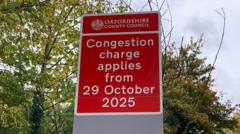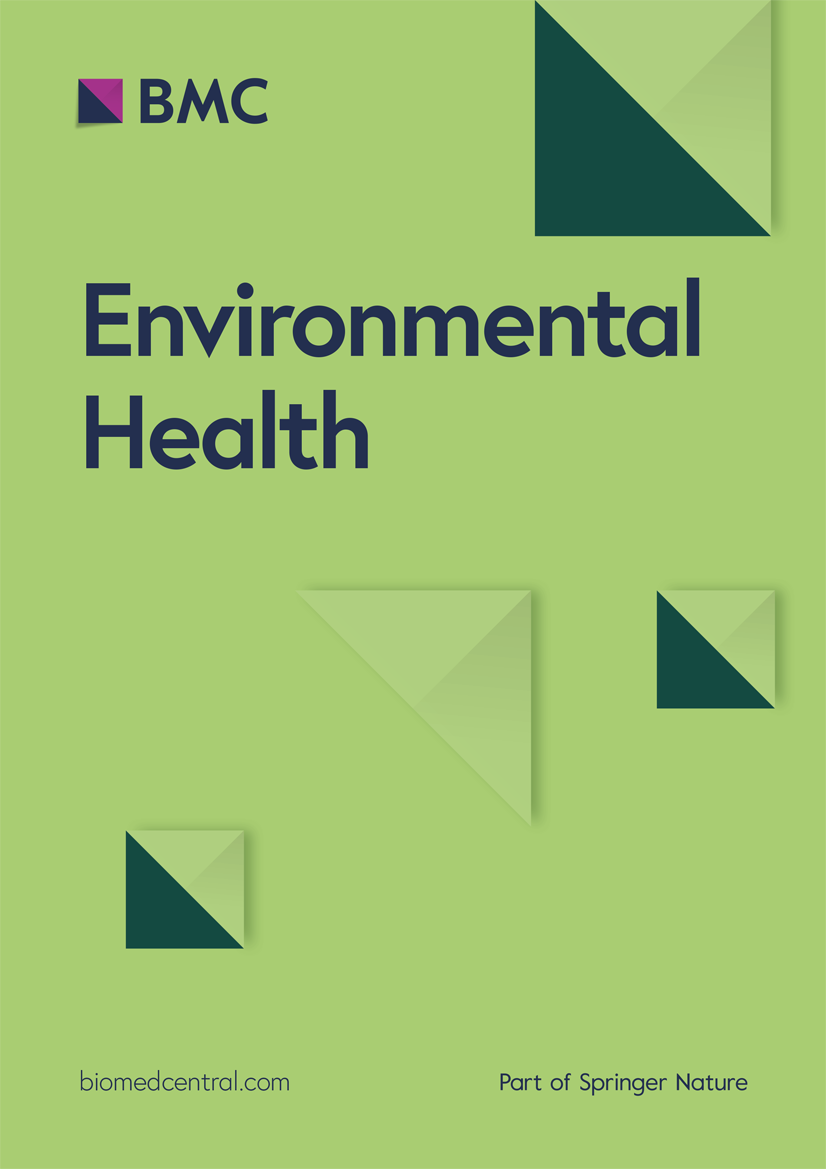Report on the Implementation of Oxford’s Congestion Charge Scheme and its Alignment with Sustainable Development Goals
1.0 Introduction and Scheme Overview
Oxfordshire County Council is set to launch a temporary congestion charge scheme on 29 October. This initiative is a critical component of the city’s strategy to advance several United Nations Sustainable Development Goals (SDGs), particularly those focused on urban sustainability, public health, and climate action. The scheme will utilize Automatic Number Plate Recognition (ANPR) cameras at six key locations. However, acknowledging initial implementation challenges, the council has instituted a six-week introductory ‘grace period’.
2.0 Strategic Alignment with Sustainable Development Goals (SDGs)
The congestion charge policy is fundamentally aligned with the global 2030 Agenda for Sustainable Development. Its primary objectives directly support the following goals:
- SDG 11: Sustainable Cities and Communities: By aiming to reduce traffic volume, the scheme directly addresses Target 11.2, which calls for providing access to safe, affordable, accessible, and sustainable transport systems for all. It also contributes to Target 11.6 by seeking to reduce the adverse per capita environmental impact of cities, including by paying special attention to air quality.
- SDG 3: Good Health and Well-being: A reduction in vehicular traffic is expected to lower levels of air and noise pollution, contributing to Target 3.9, which aims to substantially reduce the number of deaths and illnesses from hazardous chemicals and air, water, and soil pollution.
- SDG 13: Climate Action: The policy serves as a local-level climate mitigation strategy. By discouraging the use of private vehicles, it supports the integration of climate change measures into national policies and strategies (Target 13.2) by reducing transport-related greenhouse gas emissions.
3.0 Implementation Status and Mitigation Strategies
3.1 Phased Enforcement: The Grace Period
To ensure a just and effective transition, the council has adopted a soft launch approach. Key details of this period include:
- A six-week grace period commencing on 29 October.
- During this time, drivers passing through a charging point for the first time without a valid permit will receive a warning letter instead of a financial penalty.
- This measure, as articulated by Councillor Andrew Gant, the council’s transport chief, is designed to accommodate delays and raise awareness before full enforcement begins.
3.2 Operational Challenges
The initial rollout has encountered logistical hurdles that impact the scheme’s effectiveness and public preparedness. These challenges represent risks to the successful achievement of the intended SDG-related outcomes.
- Permit Processing Delays: The council is experiencing a processing time of approximately ten working days for permit applications. As of early this week, 33,000 permits had been successfully issued.
- Information Dissemination Gaps: There are significant concerns that public information campaigns have not reached all residents in a timely manner. Leaflets sent to 181,000 households began distribution on 13 October, a two-week process that may conclude after the scheme’s start date. Existing postal service delays in Oxford could further exacerbate this issue.
4.0 Governance, Infrastructure, and Stakeholder Feedback
4.1 Investment in Sustainable Infrastructure (SDG 9)
The implementation relies on new digital and physical infrastructure, reflecting an investment in sustainable urban systems.
- Online Permit System: An expenditure of £73,000 has been allocated to the development of the online permit portal.
- Communications Budget: Of a total £76,500 budget for communications, £52,627 has been spent on initiatives including posters and bus advertisements.
4.2 Stakeholder Perspectives and Institutional Accountability (SDG 16)
The scheme’s rollout has elicited varied responses, highlighting the importance of strong and transparent institutions in executing public policy.
- Council Administration: Councillor Gant has affirmed that the council is “working hard to get the message out” through all available channels, framing the grace period as an adaptive governance measure.
- Political Opposition: Councillor Liam Walker, leader of the Oxfordshire Alliance opposition group, has criticized the project’s governance, describing the £73,000 cost of the permit system as “staggering” and labeling the system itself as “confusing and unreliable” for residents.
Analysis of Sustainable Development Goals in the Article
1. Which SDGs are addressed or connected to the issues highlighted in the article?
-
SDG 11: Sustainable Cities and Communities
- The article’s central theme is the implementation of a congestion charge in Oxford. This is a direct policy measure aimed at managing urban traffic flow, reducing congestion, and making the city’s transport system more sustainable. The policy is designed to alter the behaviour of drivers within a specific urban environment, which is a core aspect of creating sustainable communities.
-
SDG 13: Climate Action
- Traffic congestion is a significant source of greenhouse gas emissions. By implementing a congestion charge, the Oxfordshire County Council is taking a local-level action to discourage the use of private vehicles. This measure contributes to the broader goal of mitigating climate change by reducing transport-related carbon emissions.
-
SDG 3: Good Health and Well-being
- A primary benefit of reducing traffic congestion is the improvement of air quality. Vehicle emissions contain pollutants harmful to human health. By reducing the number of cars, the policy implicitly aims to lower air pollution, which can lead to better respiratory health for the city’s residents.
-
SDG 16: Peace, Justice and Strong Institutions
- The article details the administrative and governance challenges faced by a public institution, the Oxfordshire County Council, in implementing a new policy. It discusses the cost of the system (£73,000), communication strategies, public awareness, and the council’s response to implementation issues (the “grace period”). This highlights the importance of effective, accountable, and transparent institutions in public service delivery.
2. What specific targets under those SDGs can be identified based on the article’s content?
-
Under SDG 11: Sustainable Cities and Communities
- Target 11.2: “By 2030, provide access to safe, affordable, accessible and sustainable transport systems for all…” The congestion charge, while restricting car use, is a tool to manage the transport system. The ultimate goal of such schemes is to encourage a shift towards more sustainable modes like public transport, cycling, or walking, thereby improving the overall transport system’s sustainability.
- Target 11.6: “By 2030, reduce the adverse per capita environmental impact of cities, including by paying special attention to air quality…” The policy directly addresses the environmental impact of traffic in Oxford. Reducing the number of vehicles through a charge is a clear strategy to improve urban air quality.
-
Under SDG 13: Climate Action
- Target 13.2: “Integrate climate change measures into national policies, strategies and planning.” The congestion charge is a local-level example of integrating a climate change mitigation measure (reducing transport emissions) into urban planning and policy.
-
Under SDG 3: Good Health and Well-being
- Target 3.9: “By 2030, substantially reduce the number of deaths and illnesses from… air… pollution and contamination.” By aiming to decrease vehicle traffic, the policy is inherently linked to reducing air pollution, which is a direct contributor to various illnesses.
-
Under SDG 16: Peace, Justice and Strong Institutions
- Target 16.6: “Develop effective, accountable and transparent institutions at all levels.” The article explores the effectiveness and accountability of the Oxfordshire County Council. It mentions the “staggering” cost of the permit system, its “confusing and unreliable” nature for residents, and delays in communication, all of which are relevant to evaluating institutional performance.
3. Are there any indicators mentioned or implied in the article that can be used to measure progress towards the identified targets?
-
For SDG 11 (Sustainable Cities and Communities)
- Number of permits issued: The article states, “33,000 people had so far been issued permits.” This figure serves as an indicator of the scale of the program and the number of individuals participating in the regulated transport system.
- Number of non-compliance incidents: The introduction of a “grace period” where first-time offenders receive a letter instead of a fine implies that the number of drivers passing through without a permit will be tracked. This data can measure the initial compliance rate and the effectiveness of the communication campaign.
-
For SDG 16 (Peace, Justice and Strong Institutions)
- Public expenditure on the system: The article explicitly mentions the cost of the online permit system (“£73,000”) and the communications budget (“£52,627 of a £76,500 total budget”). These figures are direct indicators of the financial resources allocated and can be used to assess the efficiency and transparency of the institution.
- Administrative processing time: The statement that it is “taking around ten working days for the council to process permits” is a key performance indicator for the efficiency of the administrative process.
- Public outreach and information dissemination: The article mentions that “leaflets had been sent to 181,000 households.” This number is an indicator of the reach of the council’s communication efforts to ensure an informed public.
- Public perception and feedback: The comment from Councillor Liam Walker that residents found the system “confusing and unreliable” is a qualitative indicator of public satisfaction and the system’s user-friendliness, reflecting the institution’s responsiveness to citizen needs.
4. Summary Table of SDGs, Targets, and Indicators
| SDGs | Targets | Indicators |
|---|---|---|
| SDG 11: Sustainable Cities and Communities | 11.2: Provide access to sustainable transport systems. 11.6: Reduce the adverse per capita environmental impact of cities, paying special attention to air quality. |
|
| SDG 13: Climate Action | 13.2: Integrate climate change measures into policies and planning. |
|
| SDG 3: Good Health and Well-being | 3.9: Substantially reduce illnesses from air pollution. |
|
| SDG 16: Peace, Justice and Strong Institutions | 16.6: Develop effective, accountable and transparent institutions. |
|
Source: bbc.co.uk






